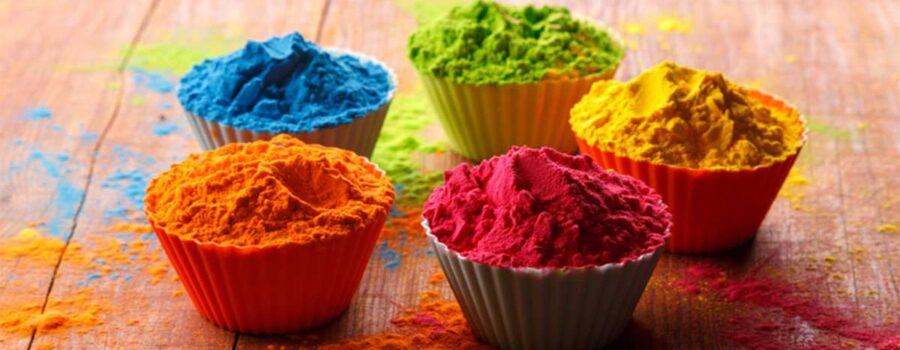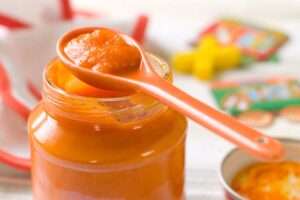Have you ever wondered why the food on our plates is so vividly colorful? I mean, it’s not like Mother Nature hands out bright colors willy-nilly, right? So, what’s the deal with these rainbow hues in our grocery aisles? Well, brace yourselves for The colorful truth behind food dyes.
Did you know that food companies often play dress-up with our meals? Yes, they doll up the food with artificial colors, making it look more appetizing, and sometimes, even healthier. I bet you’ve picked up that packet of vibrant green spinach wraps, thinking it’s a great healthy choice for the family. I know I have. But guess what? The green isn’t from an overload of spinach; it’s from a mix of blue and yellow food dyes. Tricky, right?
Today, let’s pull back the curtain on this colorful masquerade, understand why it’s more than just a sneaky marketing trick, and learn how we can make smarter choices for our families.
When Food Plays Dress-Up: How Color Impacts Our Perception
We humans are wired to associate certain colors with specific tastes and nutritional values. You know how green foods scream ‘fresh and healthy’ while those brown ones seem like they’ve been processed within an inch of their lives? Well, food companies have got this psychology down pat, and boy, do they use it!
Remember those spinach wraps? Yep, we were fooled by their green hue, thinking they were packed with spinach goodness. And it’s not just these wraps; it’s a widespread practice in the food industry, with numerous products being dressed up in deceptive colors.
The Rainbow of Deception: Foods Dressed Up in Artificial Dyes
Now, food dyes aren’t just playing dress-up with spinach wraps. They’re all over the place, adding their deceptive charm to a whole range of foods:
- Processed Fruit Juices: Those vibrant colors scream ‘packed with fruit,’ right? Wrong. They often contain added colors to mimic a higher fruit content.
- Breakfast Cereals: You know the ones, especially those targeted at our little ones, filled with artificial colors to make them look more yummy. Some even pretend to be fruits!
- Packaged Salads and Pre-cut Fruits: Yep, some of these use color preservatives to make them seem fresher for longer.
- Flavored Yogurts: These often get their bright, fruity colors more from dyes than from actual fruit. Some brands even use colors to suggest a fruit variety that isn’t there at all!
- Packaged Bread and Other Baked Goods: Some of these use coloring to pretend they’re healthier and more wholesome than they actually are.
But it’s not just about being fooled; there are potential health risks involved too.
The Dark Side of the Rainbow: Health Concerns with Artificial Food Dyes
Artificial food dyes have been a hot topic in the health world, and for good reason. Studies have linked these dyes to various health concerns, such as hypersensitivity reactions and even potential links to behavioral issues in kids.
Despite these concerns, these dyes are still widely used. Why? Well, they’re cheap, they make food look good, and we consumers, well, we eat with our eyes first. So, what can we do about it?
Navigating the Rainbow: Spotting and Avoiding Artificial Colors
Here’s the good news: we can learn to spot these colorful imposters:
- Read Labels Carefully: Ingredients are listed by weight, so if you see a dye listed high up, there’s a lot of it in there.
- Opt for Whole Foods: Fresh fruits, veggies, whole grains, and lean proteins are less likely to contain artificial dyes. Plus, they offer a natural palette of colors.
- Choose Foods with Natural Colorings: Some companies use natural colorings from fruits, veggies, and spices. Look out for these on the label.
- Be Wary of Bright Colors: Neon foods are more likely to contain artificial dyes. Natural colors are usually more muted.
Now, while we can do our bit, it’s important to also question the role of regulatory bodies in controlling the use of these dyes.
The Watchdogs and the Future: Regulatory Agencies and Food Dyes
Agencies like the U.S. Food and Drug Administration (FDA) and the European Food Safety Authority (EFSA) are tasked with controlling the use of food dyes. But are they doing enough? Some critics argue for stricter regulations and more transparency, especially when it comes to foods using dyes to look healthier.
Looking ahead, I’m hopeful we’ll see a shift towards more natural alternatives, driven by consumer demand for cleaner labels and healthier ingredients. And we, as parents and consumers, need to keep pushing for this change.
Wrapping Up: Let’s Use Our Buying Power for Good
Here’s the thing, folks: by understanding how food dyes are used and learning to spot them, we can make healthier choices for our families. But we can also use our buying power to demand more honesty in food labeling.
By choosing foods free from artificial dyes, we send a clear message to the food industry about the kind of products we want to see on our grocery shelves. Together, we can contribute to a healthier, more transparent food system.
So next time you’re in the grocery store, think twice before reaching for that brightly colored package. Remember, all that glitters (or in this case, all that is brightly colored) is not gold (or healthy)!
References:
- Wansink, B. (2004). Environmental factors that increase the food intake and consumption volume of unknowing consumers. Annual Review of Nutrition, 24(1), 455-479. doi:10.1146/annurev.nutr.24.012003.132140
- Yang, Q., & Zhao, Z. (2014). Effects of food color on perceived flavor pleasantness and overall liking. Journal of Food Science, 79(7), S1375-S1383. doi:10.1111/1750-3841.12505
- Mission Foods. (n.d.). Garden Spinach Wraps. Retrieved from: https://www.missionfoods.com/products/garden-spinach-wraps/
- Olas, Beata et al. “The Effects of Natural and Synthetic Blue Dyes on Human Health: A Review of Current Knowledge and Therapeutic Perspectives.” Advances in nutrition (Bethesda, Md.) vol. 12,6 (2021): 2301-2311. doi:10.1093/advances/nmab081
- Kobylewski, Sarah, and Michael F Jacobson. “Toxicology of food dyes.” International journal of occupational and environmental health vol. 18,3 (2012): 220-46. doi:10.1179/1077352512Z.00000000034
- Arnold, L Eugene et al. “Artificial food colors and attention-deficit/hyperactivity symptoms: conclusions to dye for.” Neurotherapeutics : the journal of the American Society for Experimental NeuroTherapeutics vol. 9,3 (2012): 599-609. doi:10.1007/s13311-012-0133-x
- Encyclopedia of Agriculture and Food Systems. (2014). Tartrazine: Yellow Dye. Tartrazine – Food Toxicology. https://www.sciencedirect.com/topics/agricultural-and-biological-sciences/tartrazine
- Center for Food Safety and Applied Nutrition. (n.d.). Summary of color additives for use in the United States. U.S. Food and Drug Administration. https://www.fda.gov/industry/color-additive-inventories/summary-color-additives-use-united-states-foods-drugs-cosmetics-and-medical-devices.
- Curran, L. (2010, July 21). EU places warning labels on foods containing dyes. Food Safety News. https://www.foodsafetynews.com/2010/07/eu-places-warning-labels-on-foods-containing-dyes/.








